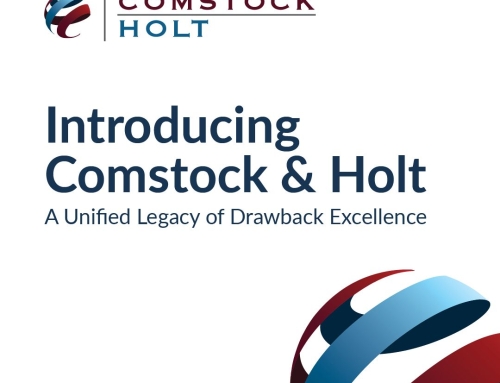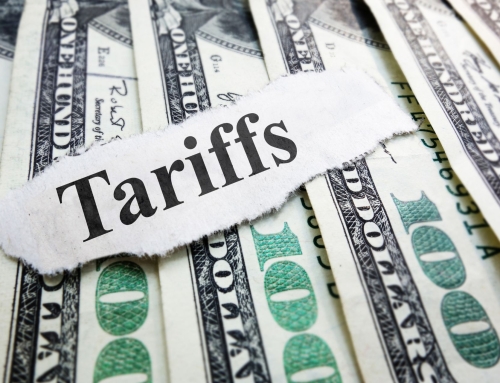Duty Drawback is the refund of certain duties, taxes and certain fees collected upon the importation of goods. The refund process is triggered by a claim that is submitted after duty-paid imported merchandise is exported or used in the manufacturing of an exported article.
Growing up with a family involved in the drawback industry gave me a unique understanding of what “duty drawback” is. It certainly made for interesting playground conversations when I was asked “what does your daddy do?” All my life, I’ve been taught to use visual aids for the description, which works well because virtually anything you have sitting in front of you at any given time could have a potential drawback opportunity. To simplify the drawback process for this article, I will be using a pen as my claimable merchandise to walk through the different types of drawback.
Unused Merchandise Drawback
There are two options for claiming Unused Merchandise – Direct Identification under 19 U.S.C. §1313(j)(1) or Substitution under 19 U.S.C. §1313(j)(2). Let’s say I import a pen and pay a duty rate of 5%. That pen sits in my warehouse, is never sold or used in the U.S., and there are no manufacturing operations performed on it. I then export it to a foreign country. My drawback claim will be for 99% of the duties, taxes, and fees that were paid on that imported pen. The key here is that the pen that is exported is in the “same condition” as when that pen (or a different imported pen that is “commercially interchangeable” if you’re using substitution) was imported. It’s important to note that the upcoming legislation changes under the Trade Facilitation and Trade Enforcement Act (TFTEA) will simplify the claiming process by focusing on the HTS classification of the imported and exported material. Read more about that here.
Manufacturing Drawback
A drawback opportunity for Manufacturing Drawback (filed under 19 U.S.C. §1313(a) and (b)) exists if duty is paid on imported merchandise which is then used in the production of articles that are subsequently exported. Looking at my pen, this scenario would exist if I’m importing certain pieces of the pen separately and purchasing the ink from a domestic supplier. I am manufacturing the finished good here in the U.S. and then exporting it. I can claim drawback on the components that were imported where duty was paid, or substitute similar “same kind and quality” merchandise that was imported or sourced domestically.
Petroleum Drawback
Despite the name of this type of drawback (which is covered by 19 U.S.C. §1313(p)), this statute covers specific listed HTS numbers which encompass a wide array of petroleum derivatives. The 8-digit HTS number for a qualifying (p) article is the basis of the claim, as the merchandise that is imported is compared to the classification of the exported article. If they are the same, then a claim can be filed. Certain resins and plastics can fall into these petroleum derivatives classifications, so for my pen, let’s assume that the plastic barrel is imported under a (p) eligible HTS number. Perhaps I don’t use all of the quantity of the imported pen barrels and have a foreign buyer that I can export a certain amount to. Since the HTS is the same for the import and the export, I can file a petroleum drawback claim.
Rejected Merchandise Drawback
This statute is specified in 19 U.S.C. §1313(c) for merchandise that may not meet expectations, conform to specifications, is defective, or shipped without consent of the consignee. As an example, my shipment of pens come in and I find that when I click the top of each pen, the ink does not pop out as expected. Therefore, I decide to ship the whole batch back to the manufacturer overseas.
Destruction
While destruction is not a type of drawback, it deserves a special mention because of one important reason: U.S. Customs allows drawback on destruction in the same way they do for exportations. That means that if I import 1,000 pens, sell 500 domestically, and find out I can’t sell the other 500; I can destroy that 500 instead and claim the drawback as a means of a partial financial refund on my merchandise.
What Drawback Opportunities Do You Have?
Drawback certainly seems simple when talking about a pen, but Comstock and Holt wouldn’t have been in business for more than 150 years if it were easy enough for everyone to do on their own. The examples above do, however, illustrate how flexible a drawback program can be, as there are several different options for claiming refunds on the duties, taxes, and fees that you pay on your imported merchandise.
My world has certainly grown since the days of those questions on the playground, but the visuals I used back then still hold true today. The one lesson that has been consistent since then? Any imported merchandise may have a drawback opportunity. Start taking a closer look at the transactions that you have and see for yourself.
From the desk of: Margo VanHeusden






